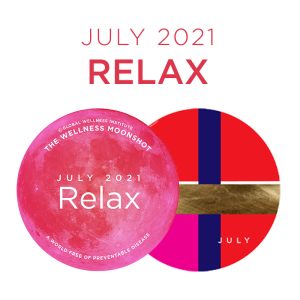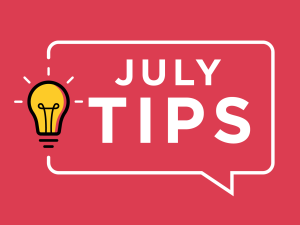
Curated by the Global Wellness Institute and Renee Moorefield, member of the GWI Advisory Board
and CEO of Wisdom Works Group.
Rest and laughter are the most spiritual and subversive acts of all.
Laugh, rest, slow down.
—Anne Lamott
As the world continues to face the ripple effects of the pandemic, we wellness leaders know many areas of people’s lives and work have taken a wellness hit. Global employment has gone backward, more children worldwide have fallen below the minimum reading level, face masks (a necessary measure of precaution during COVID-19) have become a new wave of litter harming the environment, and our mental health has collectively suffered.
PLUS, THIS PANDEMIC HAS BEEN PERSONAL

This past year may also have left you experiencing a free-floating unease you can’t seem to shake, a sense of languishing without a clear purpose or aim, or the feeling that you’ve hit the pandemic wall. You may appear calm on the surface, yet like a duck swimming in a pond, find your feet paddling as fast as they can to respond to the wellness challenges of others. In your efforts to juggle so many demands in life and work, you may even be physiologically living in an always-on beta brainwave pattern and a fight-flight-freeze-fawn system of reaction, reinforcing a state of high alarm that has become your new normal.
So, it’s possible—indeed, probable—you’ve forgotten that relaxation is one of your most effective wellness and leadership tools. Intentionally shifting into relaxation awakens the parasympathetic nervous system; counters the drawbacks of overplayed stress hormones; and promotes physical health, emotional balance, resilience and wellbeing. Yet, no one can relax for you. In our overworked, overtaxed, overstimulated world, the truth is relaxation is a spiritual, powerful, and, as author Anne Lamott says, subversive act of your wellness leadership.
TAKE ADVANTAGE OF YOUR HARD-WIRED CAPACITY TO RELAX
Just as your body-mind innately knows how to respond to the stresses placed on it, it also knows how to relax. Your being is designed for both alertness and calm. As a wellness leader, demonstrate the power of relaxation with your loved ones, team and organization—and yourself—by experimenting with these approaches:
Leading Your Team and Organization
- Work with instead of against circadian rhythms. Human biology is intimately tied to the pulse of nature. We demonstrate this every 24 hours in our sleep-wake cycle, as well as smaller ultradian rhythms throughout the day. For instance, our Basic Rest-Activity Cycle involves an increase then decrease in our alertness approximately every 90 minutes. How can you work with this natural cycle to boost wellbeing for you and your team? Ask people to organize their day into chunks of focused work punctuated by rest periods. Go for a walk following long meetings, and take a dedicated lunch break rather than work through a meal. Pause regularly for one of these conscious breaths, or set a calendar reminder to refresh the body and brain. Integrating rejuvenating off-time into the workday not only energizes good performance for you and your team, but it also makes good performance sustainable.
- Make sleep an organizational priority. When it comes to relaxation, sleep often gets short shrift. The latest studies report 62% of adults globally aren’t getting enough of it. (Check out this infographic to find out where you stand.) Sleep is linked to key skills of effective leadership, such as the ability to get results, solve problems, seek diverse perspectives, and support others. Lack of sleep is also considered a health epidemic, associated with everything from vehicular accidents, botched surgeries, and child neglect to anxiety, depression, and a host of medical conditions. Make sleep-friendly practices, such as work-free vacations, meeting schedules that are time zone-aware, circadian lighting, and progressive email policies, part of your organizational culture.
Leading Yourself
- Master your sleep. Learn about the pivotal role sleep plays in how you think, feel and function by diving into this podcast by Stanford neuroscientist Andrew Huberman. Then, experiment with the sleep protocols shared in it, such as timing your sleep properly, engaging in optic flow, using sunlight and sunset to assist the melatonin and cortisol release required for high-quality rest, and capitalizing on how you eat and exercise.
- Explore a relaxation strategy that’s new for you. Laugh, bathe in a forest, enjoy feel-good music, sigh, savor this moving art, practice yoga nidra, get a massage, or choose another restorative practice. To help families, teams, communities and organizations embrace relaxation, it’s important that we renew ourselves.
- Engage your vision. Constantly focusing your eyesight on a Zoom meeting or your smartphone is wearying. Try one of these quick practices to use your vision toward rest and wellbeing: In a safe place (seated, lying down or standing), allow your eyes to close and your eyeballs to sink back into their sockets. Take a few deep breaths, inviting the muscles around your eyes to relax. (While you’re there, invite your jaw, tongue and forehead to relax, too!) Gaze on a point in front of you, such as a leaf on a tree or a spot on a wall. Now, let your gaze soften and widen, becoming more aware of the periphery of your environment. This peripheral or “panoramic” vision activates neural pathways that tell your brain and body to relax.
WITH OUR UNCERTAINTIES ABOUT THE FUTURE, RELAXING CAN FEEL COUNTERCULTURAL; HOWEVER…
We believe creating cultures that value relaxation at work and home is our collective opportunity for growth. The Wellness Moonshot: A World Free of Preventable Disease is here to support you. Tell us a story using #wellnessmoonshot on social media about how you are making relaxation a priority; we’ll spread your inspiration worldwide. And remember to join the GWI’s Wellness Moonshot celebration on July 23 to connect and learn from others!
Next month, we’ll touch on what it means to intentionally PREPARE, to ready yourself as a wellness leader. Until then, check out each of these Wellness Moonshot articles from past years with invaluable insights and strategies for your wellness leadership journey.
 TIPS TO EXPAND YOUR MOONSHOT
TIPS TO EXPAND YOUR MOONSHOT
Just as your body-mind innately knows how to respond to the stresses placed on it, it also knows how to relax. Your being is designed for both alertness and calm. As a wellness leader, demonstrate the power of relaxation by experimenting with these approaches. Save this encouraging advice, which is excerpted from Renee Moorefield’s article, on why embracing relaxation is important to renew ourselves and support our families, teams, and communities. READ TIPS
MORE RESOURCES
-
- Read about additional science and practices to help you relax, renew and get healthy sleep.
- Check out the Global Wellness Institute’s Sleep Initiative to learn more about sleep as the foundation of health, wellbeing and disease prevention.
- Explore other GWI Initiatives, such as Massage Makes Me Happy, Salt & Halotherapy, Hot Springs, Hydrothermal, Sound Wellness, and Yoga Therapy.
- Learn about the sleep trends emerging globally, along with the underestimated effects of sleep deprivation.
- Dive into the scientific studies about relaxation therapy techniques for eliminating tension in the body and promoting a peaceful state of mind.
- Download the report: Focus Shifts from Sleep to True Circadian Health.
- Learn more about true circadian health in this Global Wellness Summit trend.
- Become a global strategic partner of The Wellness Moonshot: A World Free of Preventable Disease.
- Customize The Wellness Moonshot resources: Contact Kendra Kobler ([email protected]) for specific ways to tailor The Wellness Moonshot branding assets and educational materials to meet the needs and aspirations of your company, community or country.























































